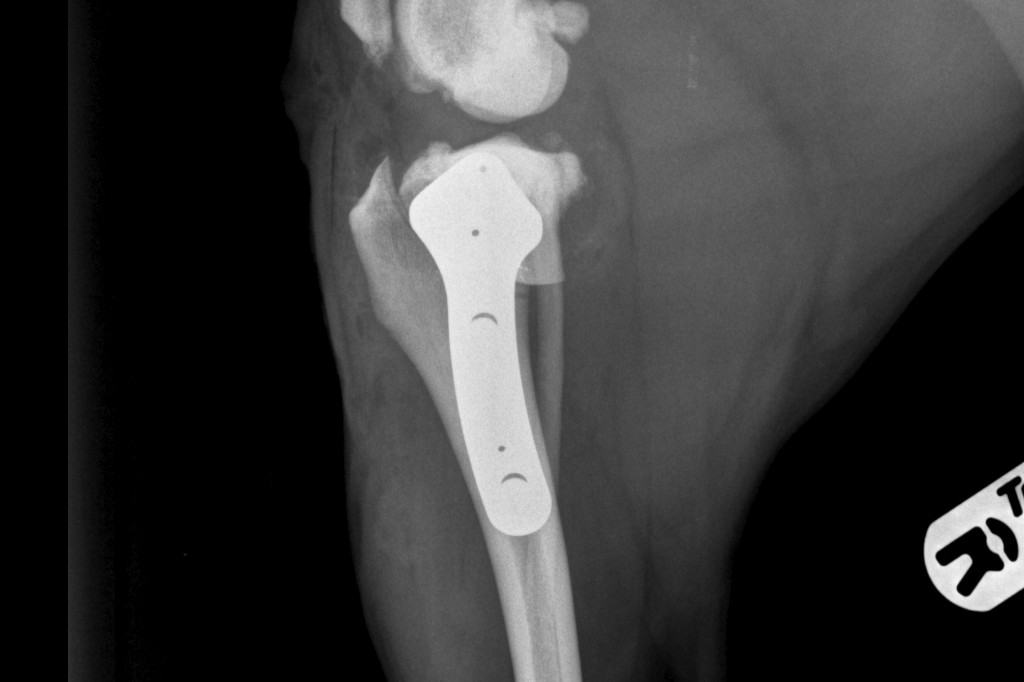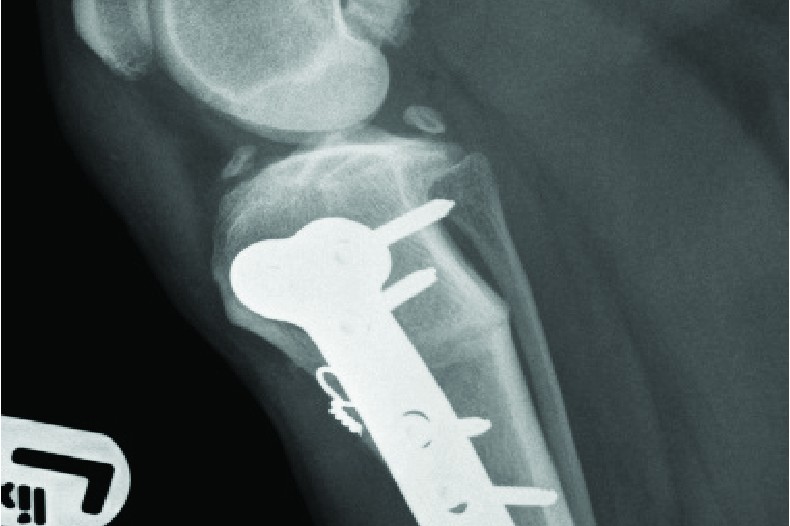CRUCIATE LIGAMENT RUPTURE
Cruciate Ligament Rupture
Cruciate ligament rupture is the most common cause of lameness in the dog, which if left untreated can cause significant pain, arthritis and loss in quality of life. There are a number of different operations that can help alleviate this pain and get your dog back to its normal lifestyle as quickly as possible.
Cardiff Canine Knee Clinic offers expert surgical management of this debilitating disease at affordable, fixed prices.
With over 10 years of orthopaedic experience Tom offers an initial free consultation to allow him to examine your pet, discuss your pet’ s lifestyle, and advise you on how best to treat this disease in your dog.
Cruciate Surgery : TPLO £3500 | Lateral Suture £1750 | Patellar Luxation £2500
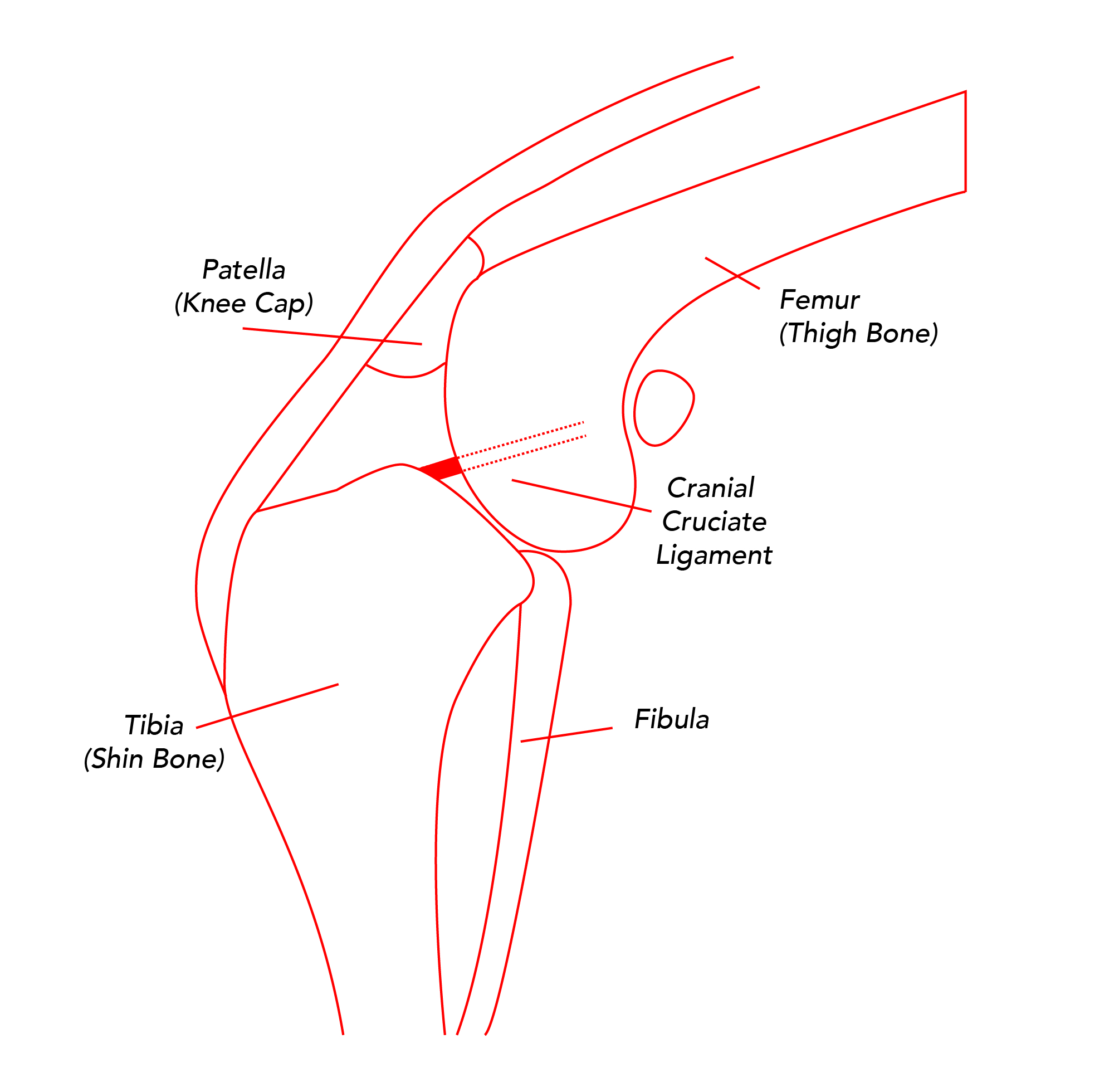
The CCL is a tough fibrous ligament found inside the knee joint that attaches the thigh bone to the shin bone.
When a dog walks or runs its weight is transferred up its leg and through the knee. As weight crosses from the shin bone to the thigh bone the knee is forced apart. The top of the shin bone where the thigh bone sits (called the tibial plateau) is sloped backwards – this slope acts to increase the force moving the two bones apart.
The CCL connects these two bones together and acts like an anchor preventing unwanted movement, similar to a ship’s anchor tethering it in rough seas.
Most people will know a friend or sports person who has ruptured their CCL as a result of an accident – often playing sport.
In humans the ligament goes from being normal to ruptured in an instant – this type of injury is called a ‘primary rupture’.
Primary ruptures are very rare in dogs; only 10% of cases happen in this way and are usually due to an accident like getting caught in a fence.
90% of CCL ruptures in dogs are termed ‘secondary rupture’ and are due to gradual degeneration of the ligament, this we term ‘CCL disease’.
In CCL disease the ligament is slowly broken down over time, gradually weakening to a point at which it fails – imagine a rope slowly fraying until it eventually snaps.
The reason for this degeneration in dogs is not clearly understood, however it is likely to have a genetic component as certain breeds seem predisposed (Labrador, Rottweiler, Boxer, Chow Chow, Golden Retriever).
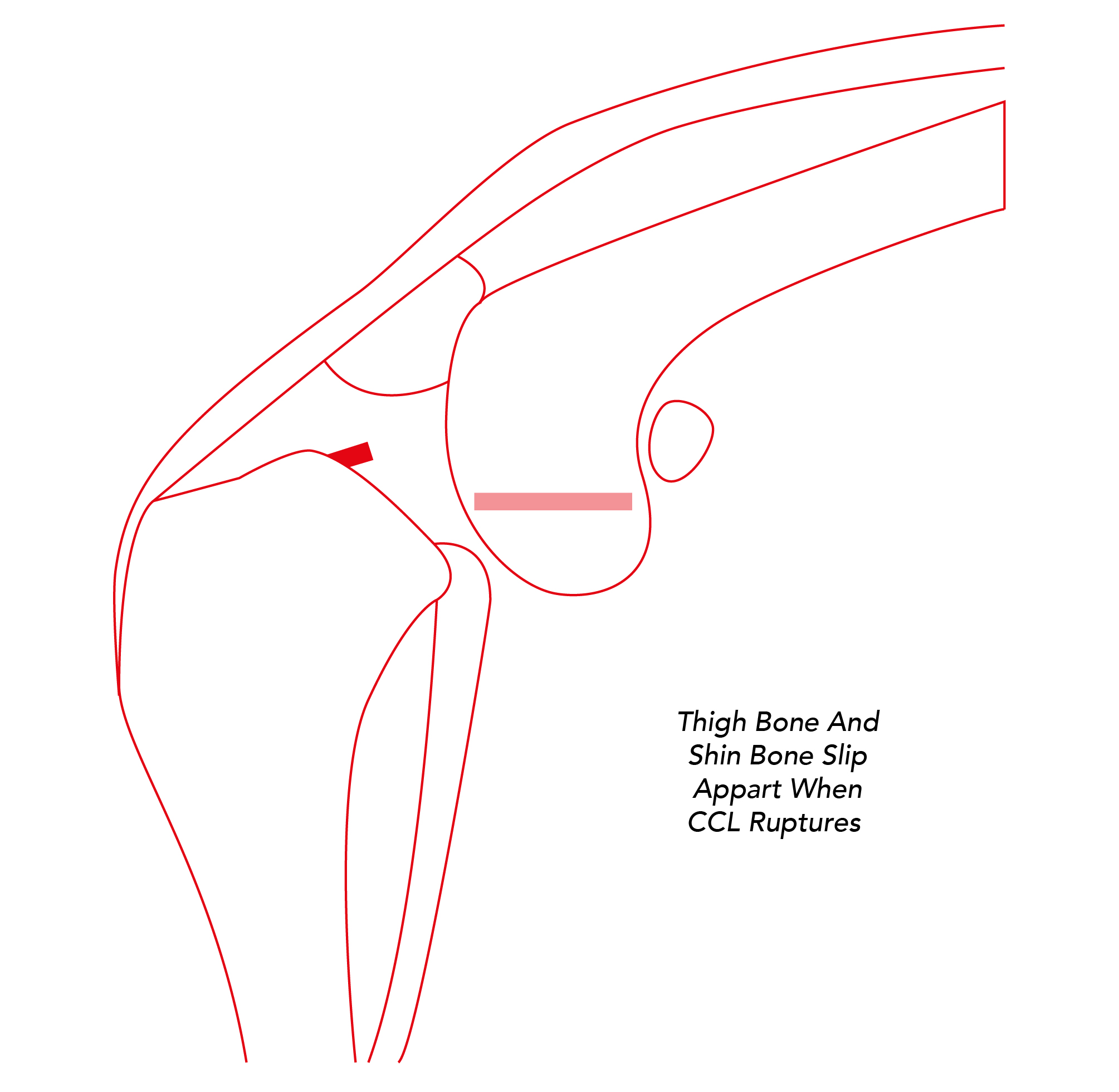
When the damaged CCL is stretched it causes pain in the dog’s knee. When the CCL ruptures completely the knee is no longer stable and the shin and thigh bones are able to move apart during movement. This abnormal movement causes significant discomfort, and as such the predominant sign of CCL rupture (regardless of stage of disease) is limping on a back leg. The severity of signs will vary with the stage of disease but also with each individual dog’s physical attributes and pain thresholds.
Signs to look out for include:
-difficulty getting up after lying down
-reluctance to jump into a car or onto a sofa
-slowing down on walks
-muscle loss causing a skinny leg
-walking with a bent knee
First of all don’t panic!
CCL rupture in dogs is not an emergency. We recommend taking time to get the best possible treatment for your dog.
Cardiff Canine Knee Clinic is available Monday to Friday to assess your dog and assist you in structuring the best and most appropriate therapy.
CCKC has a unique approach to treating CCL disease and we will tailor a plan that best suits you and your pet’s individual requirements.
We offer a free assessment in which we will examine your dog, discuss their lifestyle, your aims for surgery, and your budget.
This holistic approach allows you to make an educated, informed decision on the treatment of your dog and the management of your budget.
The first step to diagnosis is to observe your dog walking and then physically examine your dog’s joints.
An affected knee will often feel swollen, painful and be unstable during certain manipulations.
We frequently use x-rays to demonstrate changes to the knee joint, assess how severely the joint is affected and understand your dogs individual bone structure.
CCKC takes a unique approach to treating your dog’s injury.
We consider some key information to allow you to make an informed decision on the treatment your dog receives. These include
-Age
-Lifestyle
-Activity levels
-Size / weight
-Concurrent medical conditions
-Ability to commit to rehabilitation programmes
-Anatomy – shape and size of bones
-Budget
-Your aims for the outcome of the surgery
Once the above have been considered we will then discuss the different treatment options that we think are most suitable.
Options available in the management of CCL rupture;
The vast majority of dogs with CCL rupture will benefit from having surgery on their knee.
There are a number of different operations that can be used to help a dog with a ruptured CCL.
Regardless of the technique all have a common aim – to stabilise the knee and prevent the abnormal movement of the thigh and shin bones previously described.
We can think of these operations in two distinct groups-
1/ OPERATIONS THAT HELP THE DOG’S KNEE TO STABILISE ITSELF
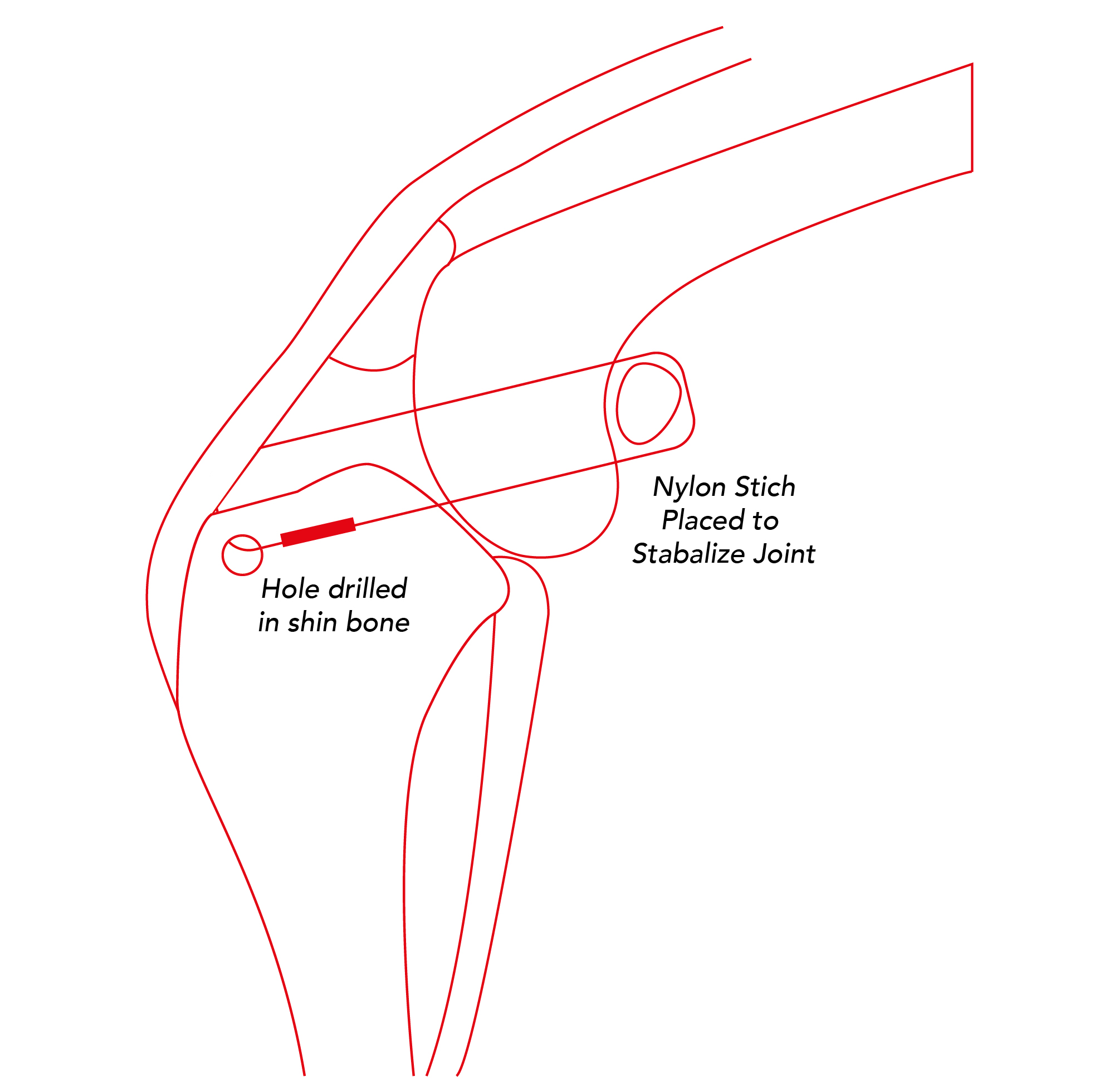
By holding the thigh and shin bones together and stopping them from slipping apart the dog can make scar tissue around the knee to act as an internal bandage holding the bones in place.
Unfortunately, this scar tissue also restricts other movements of the knee (bending/straightening) which can reduce the function of the knee in some patients.
The technique used at CCKC is called a lateral suture – essentially this is placement of a heavy duty nylon stitch around the joint to stop the thigh bone and shin bone slipping apart.
Eventually, this stitch will snap and so the technique is reliant on the dog’s own ability to heal. Think of it as a race between scar tissue formation and the stitch failure.
For this reason larger and/ or athletic patients have an increased likelihood of this stitch failing before the joint has healed which can lead to an unsatisfactory outcome.
Certain medical conditions which delay healing will also increase the risk of this procedure failing.
Positives of the lateral suture
Low risk – main complication is early stitch failure. If this happens you are just back to square one.
Low cost – compared to other techniques it requires less implants and surgical time.
Good long term outcome – in older dogs, or those who have a less active lifestyle, the outcome is often a return to pre-rupture quality of life.
Negatives of the lateral suture
Unpredictable post-op period -Some dogs do not like the feel of the stitch and won’t use the leg for weeks after surgery. This can be frustrating as your dog seems worse in the short term despite surgery.
Reduction in athletic function -The restriction of movement caused by the scar tissue can affect future activity levels.
Steep tibial plateau – dogs with abnormally steep shin bones have increased forces that are more likely to break the stitch early and also stop strong scar tissue forming.
Early stitch failure – Large/athletic dogs can break the stitch before healing has taken place.
2/ OPERATIONS THAT DYNAMICALLY STABLISE THE KNEE BY CUTTING BONES
These techniques change the conformation of the knee joint such that the CCL is no longer required – the fact the CCL has snapped does not cause instability and pain when walking / running.
By cutting the shin bone we can lower the slope of the tibial plateau and eliminate the forces driving the shin and thigh bones apart. The thigh bone sits on a more level surface so that when weight crosses the joint it doesn’t slip apart.
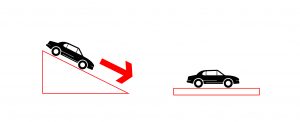
A good analogy is to think of parking a car with no handbrake – park on a hill and your car rolls away, but park on a flat road and it stays put!
There are a number of procedures described to do this (TPLO, CTWO, TTO) at CCKC we perform two different techniques to cover individual variation in dog’s bones. The choice of surgery is tailored to your dog’s individual anatomy to maximise the best possible outcome.
1/Closing Tibial Wedge Ostectomy (CTWO)
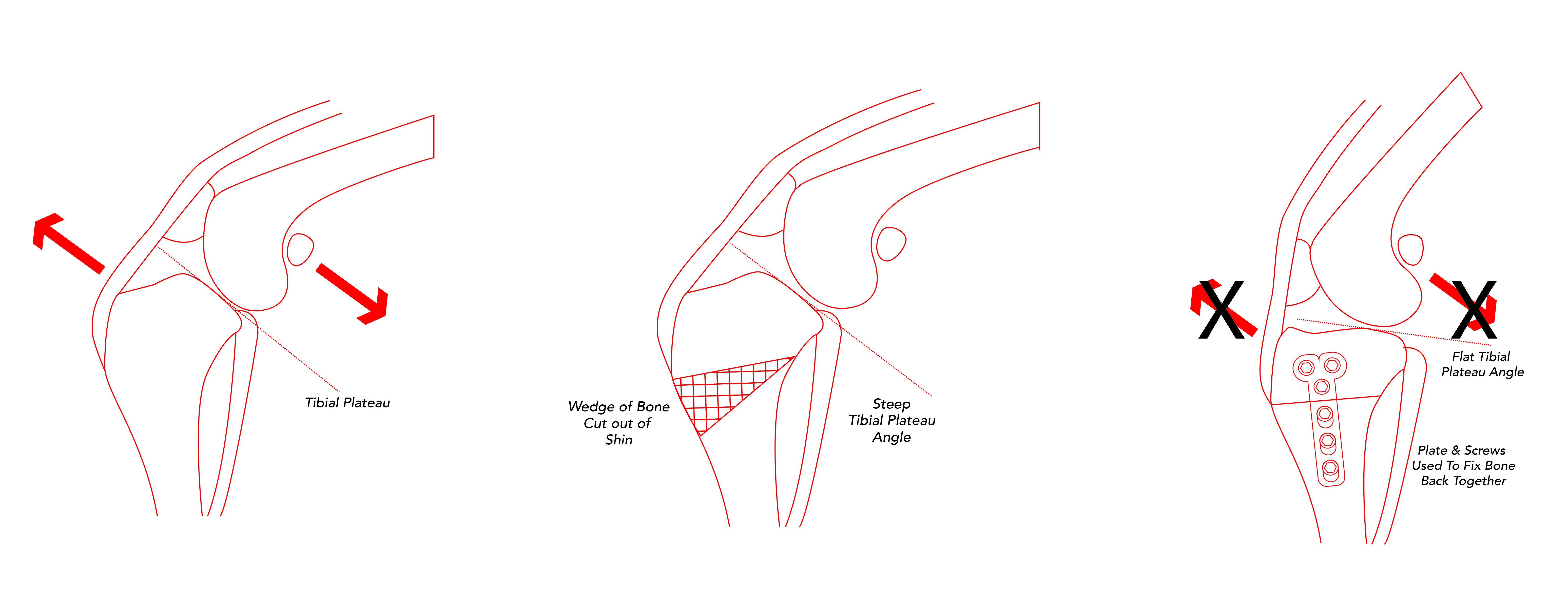
This procedure involves cutting a triangle of bone from the shin and then fixing the bone back together with a plate and screws. This lowers the front part of the shin bone which lowers the top of the shin bone (reducing the tibial plateau angle).
This technique is used in dogs that have a very steep angle at the top of their shin – evaluated in pre-operative x-rays. Other methods of surgery cannot deal with this variation in your dog’s anatomy.
2/ Tibial Plateau Levelling Osteotomy (TPLO)
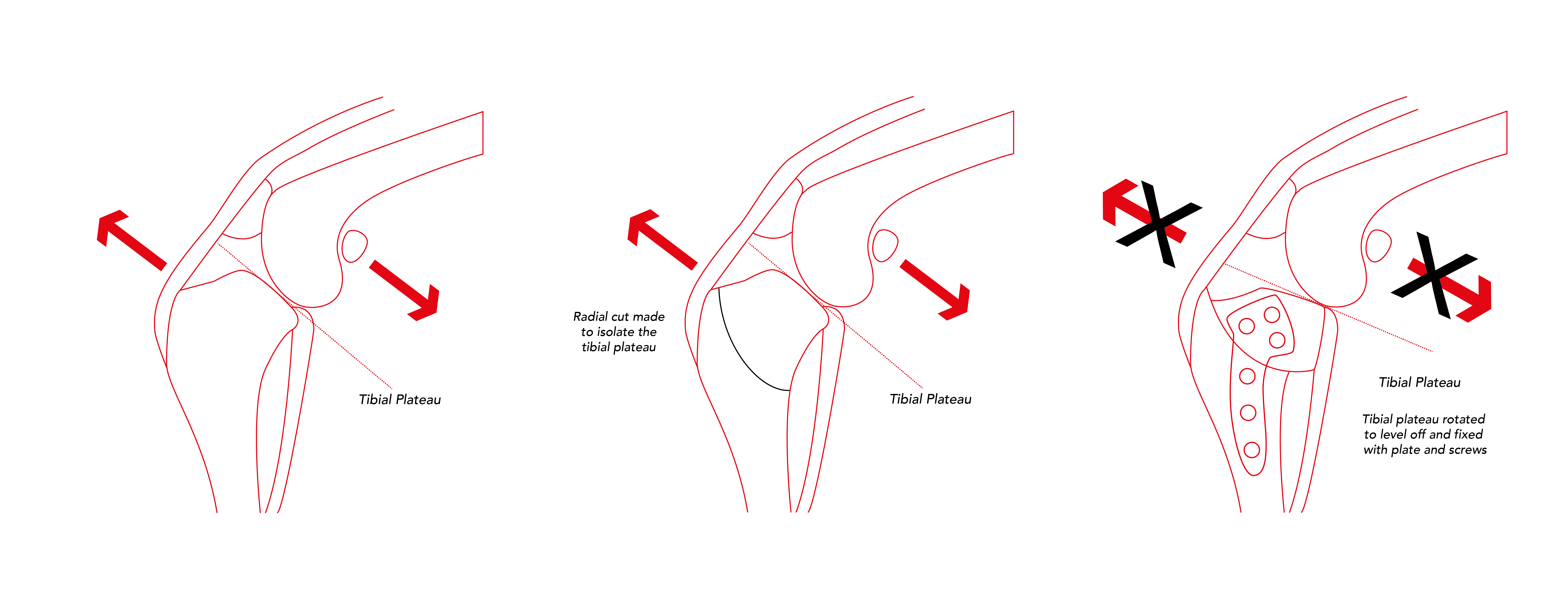
This procedure involves making a radial cut at the top of the shin bone to separate the tibial plateau. It is then rotated a set distance to level off the top of the shin bone and reduce the tibial plateau angle.
Positives of bone cutting techniques
Predictable post-op period – The vast majority of dogs will use their leg a few days after surgery. This is because the knee has been dynamically stabilised and the knee no longer needs a cruciate ligament.
Better return of athletic function – Most dogs will show excellent levels of post-op mobility and athleticism. This is important in dogs who love being active -going out for long walks and playing with other dogs.
Negatives of bone cutting techniques
Expensive – these techniques require expensive equipment to perform them, and also need several hundred pounds worth of surgical implants.
Complications – although fortunately rare, bone techniques have the potential for more serious complications should things go wrong.
For some dogs deciding not to perform surgery is the best option.
Reasons to not operate include
-Bodyweight of less than 10kg (22lb)
-Severe arthritis
-Concurrent medical diseases like diabetes, heart disease
Non-surgical management is tailored to the individual dog and typically focuses on
-Exercise modification
-Pain relief
-Weight optimisation
-Physiotherapy and rehabilitation
We understand that management of CCL rupture in dogs is complicated. Whilst our website contains a lot of information to help you we appreciate that sometimes this can lead to more questions than answers!
Take advantage of our free initial consultation and assessment, write down any questions you have and come and meet us in person to discuss you and your pet’s circumstances.
We will help you to tailor the best course of action that we think best suits your individual situation, and be with you every step of the way.
Contact us now to book your free consutation.
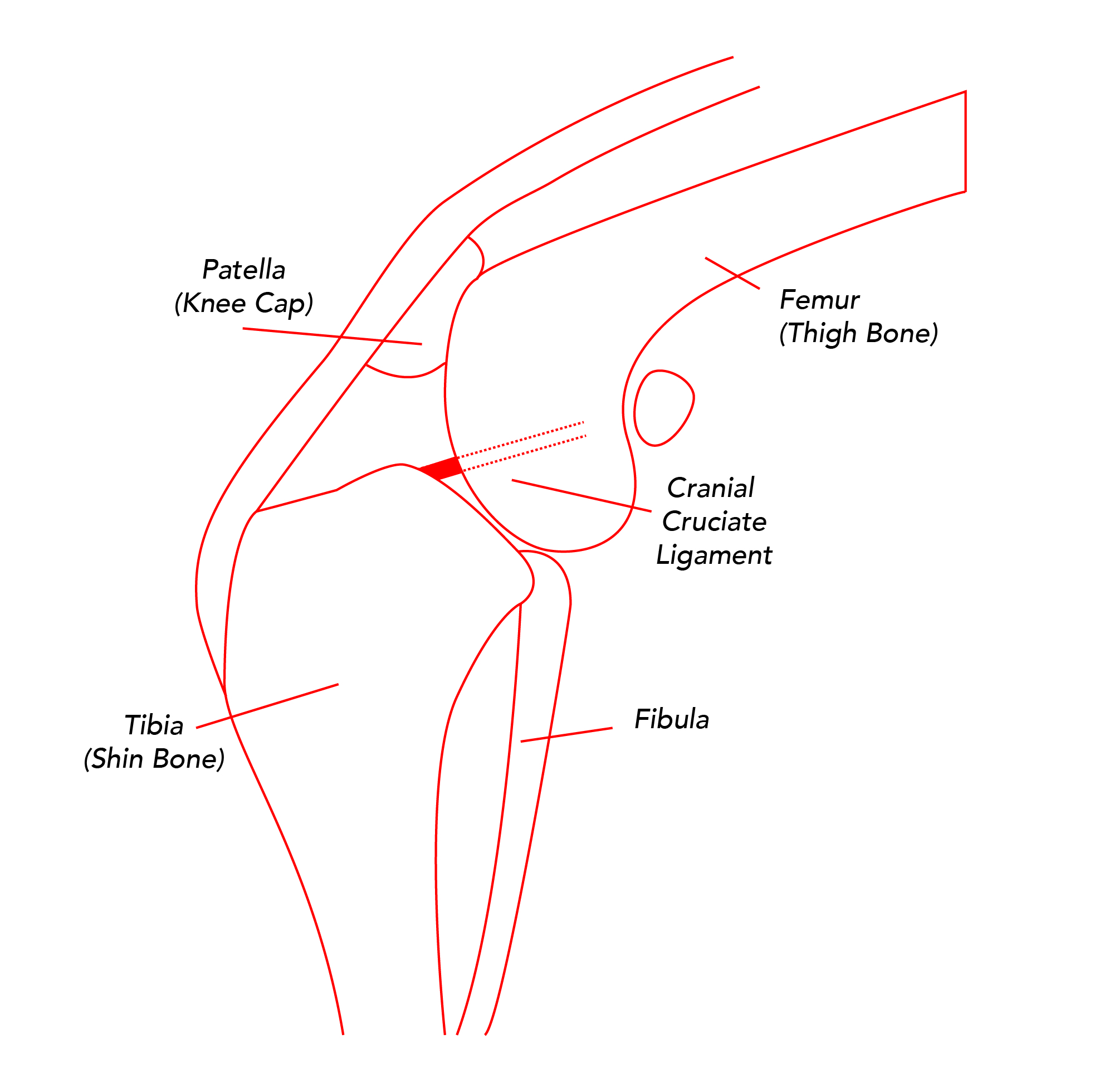
The CCL is a tough fibrous ligament found inside the knee joint that attaches the thigh bone to the shin bone.
When a dog walks or runs its weight is transferred up its leg and through the knee. As weight crosses from the shin bone to the thigh bone the knee is forced apart. The top of the shin bone where the thigh bone sits (called the tibial plateau) is sloped backwards – this slope acts to increase the force moving the two bones apart.
The CCL connects these two bones together and acts like an anchor preventing unwanted movement, similar to a ship’s anchor tethering it in rough seas.
Most people will know a friend or sports person who has ruptured their CCL as a result of an accident – often playing sport.
In humans the ligament goes from being normal to ruptured in an instant – this type of injury is called a ‘primary rupture’.
Primary ruptures are very rare in dogs; only 10% of cases happen in this way and are usually due to an accident like getting caught in a fence.
90% of CCL ruptures in dogs are termed ‘secondary rupture’ and are due to gradual degeneration of the ligament, this we term ‘CCL disease’.
In CCL disease the ligament is slowly broken down over time, gradually weakening to a point at which it fails – imagine a rope slowly fraying until it eventually snaps.
The reason for this degeneration in dogs is not clearly understood, however it is likely to have a genetic component as certain breeds seem predisposed (Labrador, Rottweiler, Boxer, Chow Chow, Golden Retriever).

When the damaged CCL is stretched it causes pain in the dog’s knee. When the CCL ruptures completely the knee is no longer stable and the shin and thigh bones are able to move apart during movement. This abnormal movement causes significant discomfort, and as such the predominant sign of CCL rupture (regardless of stage of disease) is limping on a back leg. The severity of signs will vary with the stage of disease but also with each individual dog’s physical attributes and pain thresholds.
Signs to look out for include:
-difficulty getting up after lying down
-reluctance to jump into a car or onto a sofa
-slowing down on walks
-muscle loss causing a skinny leg
-walking with a bent knee
First of all don’t panic!
CCL rupture in dogs is not an emergency. We recommend taking time to get the best possible treatment for your dog.
Cardiff Canine Knee Clinic is available Monday to Friday to assess your dog and assist you in structuring the best and most appropriate therapy.
CCKC has a unique approach to treating CCL disease and we will tailor a plan that best suits you and your pet’s individual requirements.
We offer a free assessment in which we will examine your dog, discuss their lifestyle, your aims for surgery, and your budget.
This holistic approach allows you to make an educated, informed decision on the treatment of your dog and the management of your budget.
The first step to diagnosis is to observe your dog walking and then physically examine your dog’s joints.
An affected knee will often feel swollen, painful and be unstable during certain manipulations.
We frequently use x-rays to demonstrate changes to the knee joint, assess how severely the joint is affected and understand your dogs individual bone structure.
CCKC takes a unique approach to treating your dog’s injury.
We consider some key information to allow you to make an informed decision on the treatment your dog receives. These include
-Age
-Lifestyle
-Activity levels
-Size / weight
-Concurrent medical conditions
-Ability to commit to rehabilitation programmes
-Anatomy (shape and size of bones)
-Budget
-Your aims for the outcome of the surgery
Once the above have been considered we will then discuss the different treatment options that we think are most suitable.
Options available in the management of CCL rupture;
SURGICAL MANAGEMENT
The vast majority of dogs with CCL rupture will benefit from having surgery on their knee.
There are a number of different operations that can be used to help a dog with a ruptured CCL.
Regardless of the technique all have a common aim – to stabilise the knee and prevent the abnormal movement of the thigh and shin bones previously described.
We can think of these operations in two distinct groups-
1/ OPERATIONS THAT HELP THE DOG’S KNEE TO STABILISE ITSELF

By holding the thigh and shin bones together and stopping them from slipping apart the dog can make scar tissue around the knee to act as an internal bandage holding the bones in place.
Unfortunately, this scar tissue also restricts other movements of the knee (bending/straightening) which can reduce the function of the knee in some patients.
The technique used at CCKC is called a lateral suture – essentially this is placement of a heavy duty nylon stitch around the joint to stop the thigh bone and shin bone slipping apart.
Eventually, this stitch will snap and so the technique is reliant on the dog’s own ability to heal. Think of it as a race between scar tissue formation and the stitch failure.
For this reason larger and/ or athletic patients have an increased likelihood of this stitch failing before the joint has healed which can lead to an unsatisfactory outcome.
Certain medical conditions which delay healing will also increase the risk of this procedure failing.
Positives of the lateral suture
Low risk – main complication is early stitch failure. If this happens you are just back to square one.
Low cost – compared to other techniques it requires less implants and surgical time.
Good long term outcome – in older dogs, or those who have a less active lifestyle, the outcome is often a return to pre-rupture quality of life.
Negatives of the lateral suture
Unpredictable post-op period -Some dogs do not like the feel of the stitch and won’t use the leg for weeks after surgery. This can be frustrating as your dog seems worse in the short term despite surgery.
Reduction in athletic function -The restriction of movement caused by the scar tissue can affect future activity levels.
Steep tibial plateau – dogs with abnormally steep shin bones have increased forces that are more likely to break the stitch early and also stop strong scar tissue forming.
Early stitch failure – Large/athletic dogs can break the stitch before healing has taken place.
2/ OPERATIONS THAT DYNAMICALLY STABLISE THE KNEE BY CUTTING BONES
These techniques change the conformation of the knee joint such that the CCL is no longer required – the fact the CCL has snapped does not cause instability and pain when walking / running.
By cutting the shin bone we can lower the slope of the tibial plateau and eliminate the forces driving the shin and thigh bones apart. The thigh bone sits on a more level surface so that when weight crosses the joint it doesn’t slip apart.
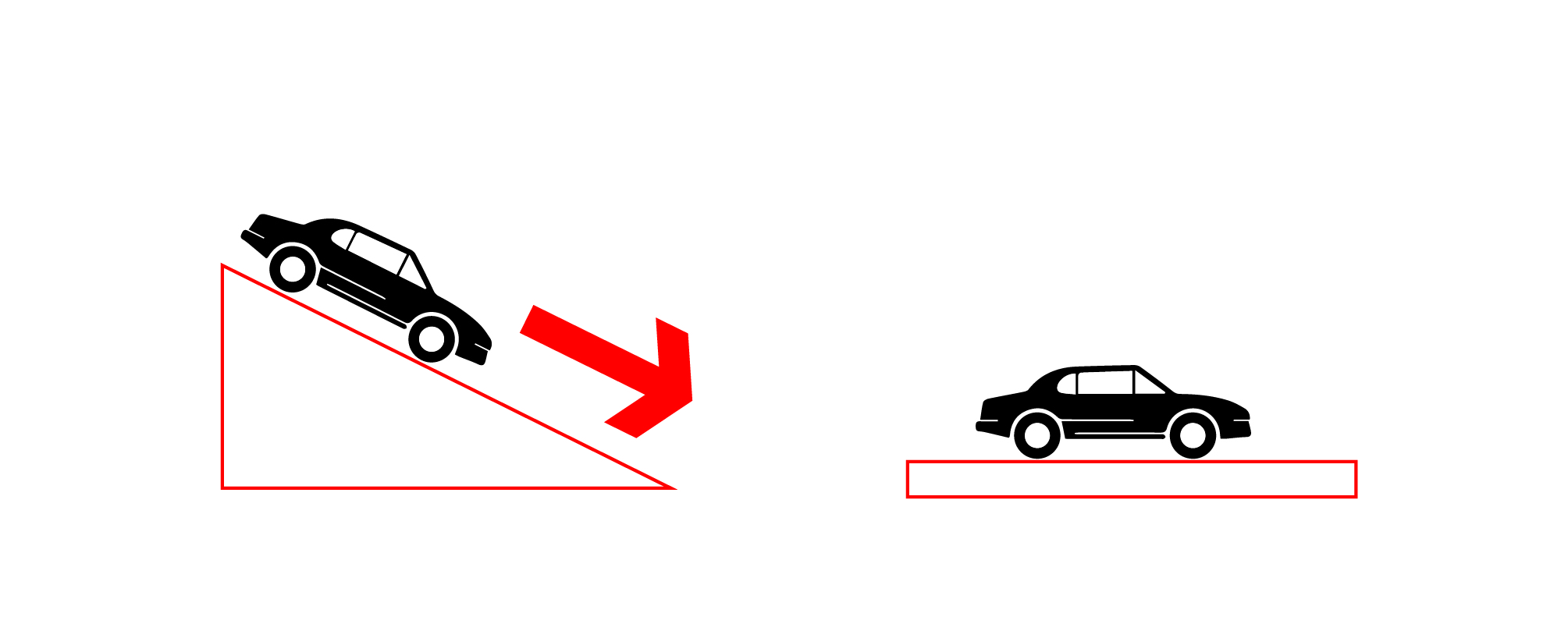
A good analogy is to think of parking a car with no handbrake – park on a hill and your car rolls away, but park on a flat road and it stays put!
There are a number of procedures described to do this (TPLO, CTWO, TTO) at CCKC we perform two different techniques to cover individual variation in dog’s bones. The choice of surgery is tailored to your dog’s individual anatomy to maximise the best possible outcome.
1/Closing Tibial Wedge Ostectomy (CTWO)

This procedure involves cutting a triangle of bone from the shin and then fixing the bone back together with a plate and screws. This lowers the front part of the shin bone which lowers the top of the shin bone (reducing the tibial plateau angle).
This technique is used in dogs that have a very steep angle at the top of their shin – evaluated in pre-operative x-rays. Other methods of surgery cannot deal with this variation in your dog’s anatomy.
2/ Tibial Plateau Levelling Osteotomy (TPLO)

This procedure involves making a radial cut at the top of the shin bone to separate the tibial plateau. It is then rotated a set distance to level off the top of the shin bone and reduce the tibial plateau angle.
Positives of bone cutting techniques
Predictable post-op period – The vast majority of dogs will use their leg a few days after surgery. This is because the knee has been dynamically stabilised and the knee no longer needs a cruciate ligament.
Better return of athletic function – Most dogs will show excellent levels of post-op mobility and athleticism. This is important in dogs who love being active -going out for long walks and playing with other dogs.
Negatives of bone cutting techniques
Expensive – these techniques require expensive equipment to perform them, and also need several hundred pounds worth of surgical implants.
Complications – although fortunately rare, bone techniques have the potential for more serious complications should things go wrong.
NON-SURGICAL MANAGEMENT
For some dogs deciding not to perform surgery is the best option.
Reasons to not operate include
-Bodyweight of less than 10kg (22lb)
-Severe arthritis
-Concurrent medical diseases like diabetes, heart disease
Non-surgical management is tailored to the individual dog and typically focuses on
-Exercise modification
-Pain relief
-Weight optimisation
-Physiotherapy and rehabilitation
We understand that management of CCL rupture in dogs is complicated. Whilst our website contains a lot of information to help you we appreciate that sometimes this can lead to more questions than answers!
Take advantage of our free initial consultation and assessment, write down any questions you have and come and meet us in person to discuss you and your pet’s circumstances.
We will help you to tailor the best course of action that we think best suits your individual situation, and be with you every step of the way.
Contact us now to book your free consultation.

